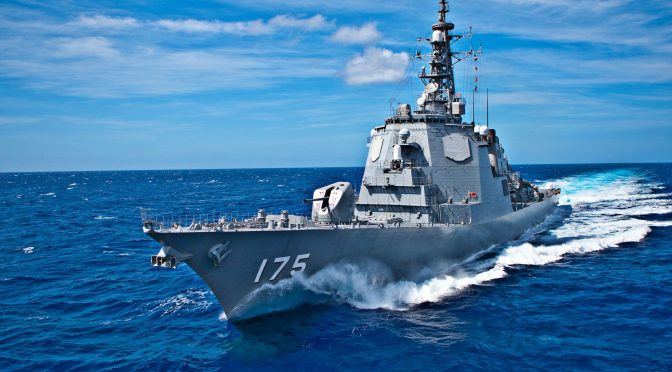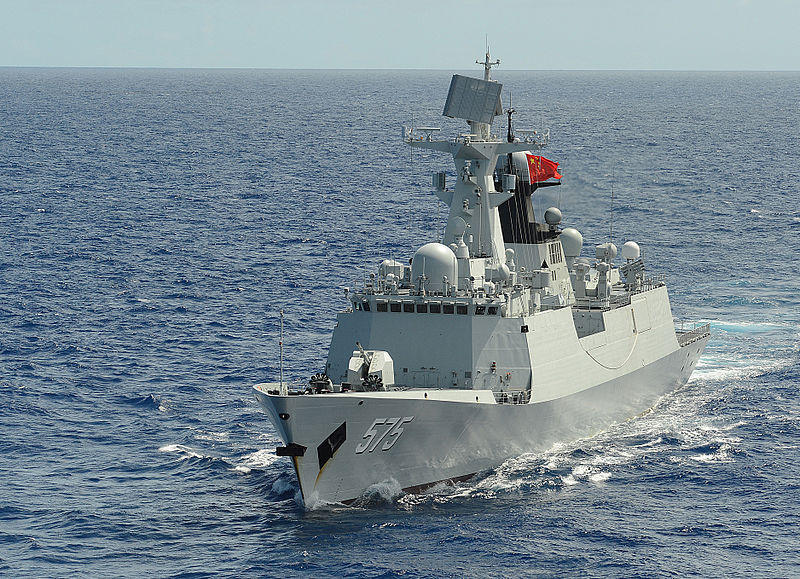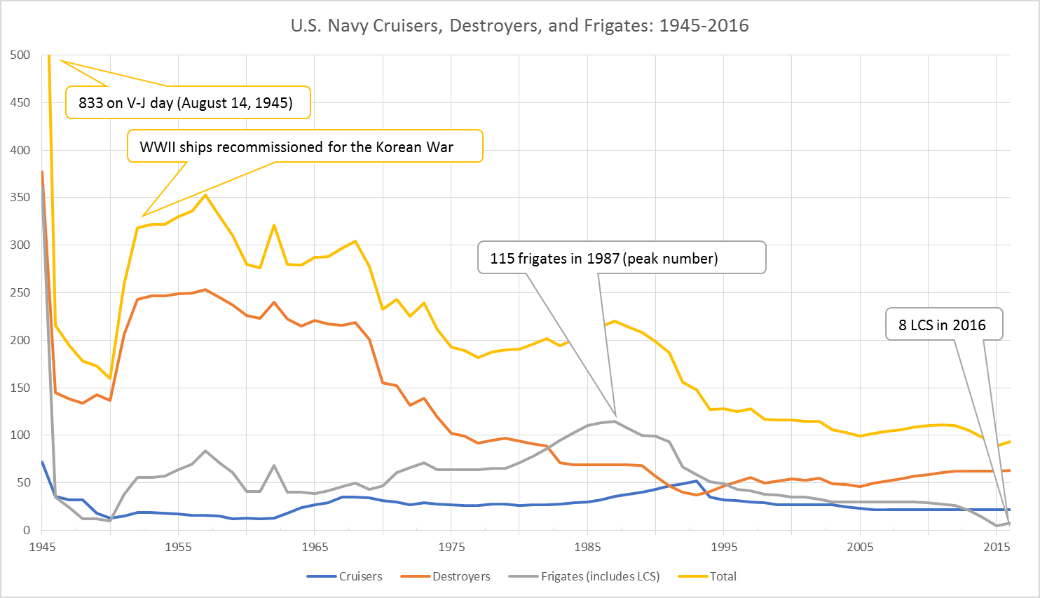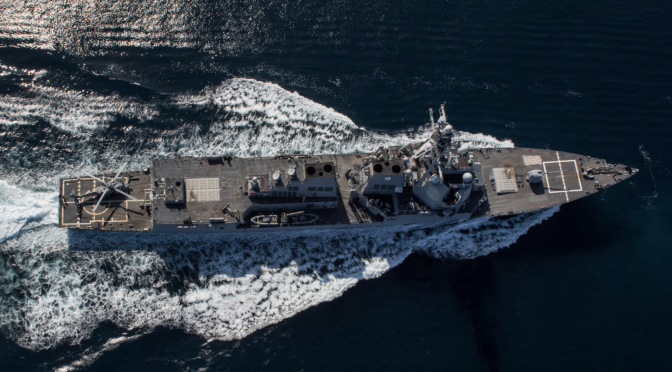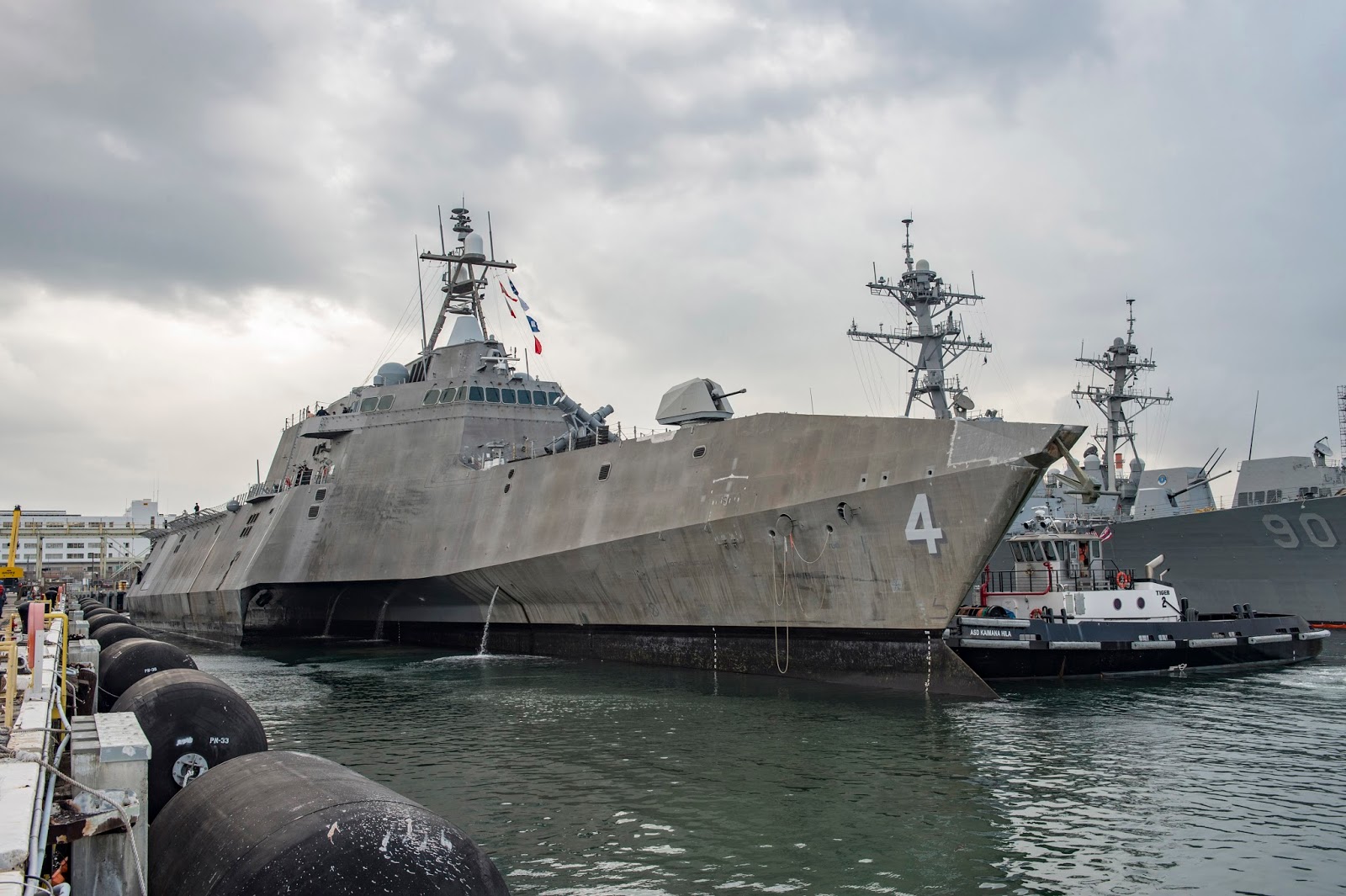By Captain Christopher H. Johnson
A month before deployment, the captain of an Oliver Hazard Perry (FFG-7)-class frigate sits quietly in his cabin. With the long process of pre-deployment inspections over and the threatening waters of the Persian Gulf a few short weeks ahead, now, more than ever before, he considers his three line department heads in the context of their impending role as Tactical Action Officers (TAOs) for the ship when it arrives in the Northern Persian Gulf. To this point, these young officers have been measured by their ability to juggle priorities, pass inspections, sustain planned maintenance at acceptable accomplishment levels, keep the squadron staff happy, and perform a number of other administrative tasks. Now they must become tacticians, and a fleeting sense of despair crosses the captain’s mind.
He recalls when he was a lieutenant junior grade serving on a destroyer in the Gulf of Tonkin, and he remembers the officers who taught him. There were operators who could sense what was happening around them with a gut instinct that distinguished them as mariners and naval officers. For a moment, he thinks about his TAOs and realizes that they are different. Yes, the world was simpler when the most complicated weapon on board was a 5-inch/38-caliber gun, but despite new weapons of enormous capability and complexity, today’s officer is better at paperwork than he is at tactics and operations.
The captain also recalls a discouraging afternoon three months ago when the operations officer and three petty officers brought to his cabin every tactical memorandum, tactical note, and Naval Warfare Publication on the ship, as references for new battle orders. Surely, within the tactics library of his ship, there would be the pearls of wisdom he needed for operations in the Persian Gulf.
Instead, he found an endless succession of publications that often dealt with obscure tactical problems and were generally out-of-date, long-winded, rarely insightful, and almost always too complex. As the petty officers packed up the publications and departed, the captain wondered why, after all this effort in tactics, there was so much paper with so little knowledge to show for it.
Now, the same question haunts him again. “I must find a way to make these department heads into tacticians,” he says aloud. “But what are tactics, and how do I prepare a tactician?” His thoughts are interrupted by a knock on his door. “Sorry to bother you, Captain,” booms the executive officer, “but we’ve got to talk about Seaman Jackson and his family problems.”
This captain’s plight is not unusual, but it is dismaying. Where have tactics gone in the modern surface Navy? Perhaps officers are too focused on being managers and administrators, and maybe the emphasis on engineering has diverted them from tactical thinking. Maybe we have accepted the contention that, in an era of overwhelming technical complexity, everything must be reduced to a lifeless, static procedure to be understood. Whatever the cause, the loss of tactics – and the subsequent appearance of hundreds of publications which masquerade as tactics – is a problem that reaches the very heart of our profession. Tactics must be resurrected.
Brilliant success on the battlefield is the object of command as practiced by Spruance, Nimitz, and other great naval tacticians of the past. Such success is not simply the result of perfect methodology, but rather it is rooted in a hierarchy of preparation and thought. First, success requires knowledge of the technical environment in which naval operations take place. Second, it requires specific procedures to guide the operation of combat systems. Third, and most important, it requires tactics.
Tactics build on knowledge and procedure, but go far beyond either. Contrary to the common definition, tactics are not like check-off lists, diagrams, or procedural doctrine. Tactics are the educated process of thought by which a battlefield commander adapts procedure, knowledge, and insight to the situation at hand and molds a winning plan. Tactics, therefore, are characterized by responsive, analytical, and individualized solutions to real-life circumstances. Tactical ideas or procedures may be found in books, publications, or manuals, but tactics rely on ingenuity, instinct, and innovation. Tactics are never a single answer to a generic tactical problem; but a continuous effort to find the right way to undermine, exploit, and beat the enemy.
In the tactician’s mind, the heart of this tactics thought process is his continuous, individual, and deeply personal struggle with an assortment of intangible measurements, including his vision of the mission at hand, its bounds, rules of engagement, sequences, priorities, and urgencies; analysis of the critical capabilities and limitations of own force; experience, courage, and determination; his commitment to the safety of the ship and personnel; an evaluation of the enemy’s frame of mind, liabilities, strength, and mission; and an appreciation of the opportunities provided by geography, environment, or political conditions.
The process has an immediate and an ultimate product. The immediate object of tactics is a real-time vision, or sense of the tactical balance sheet. What are the key opportunities and critical liabilities inherent in the situation? Where are we strong, and where is the enemy weak? What actions will confuse the enemy? How can friendly forces further undermine enemy strength? How can the enemy’s confidence be shaken?
This analysis leads to the ultimate object of tactics: a course of action, springing from inspiration and evaluation of all factors, which will win with minimal cost. To win while taking few losses defines brilliant action and is the indisputable purpose of tactics, inherent in all the greatest naval victories in history. Our country wants us to act boldly and bring our sailors home safely. Sadly, the tactics underpinning this goal have come to be procedures for pitting one weapon against another, rather than a thought process for winning.
It is useful at this point to contrast the tactician with today’s officer who is more accustomed to the role of technician. Technicians live in a world of black and white, focusing exclusively on mechanics and measurements; they are often caught up in an engineering-oriented ethic which asserts that there is a single, discrete solution for every situation. To the technician, combat is a toe-to-toe struggle where the most perfectly designed and operated system wins. Conversely, the tactician sees this technical struggle as essential but subordinate to other vital issues. To him, the engagement is a series of chess moves where the best thinker, the most accomplished facilitator of quick, decisive, and perfectly timed action will win. To the technician, the victory at Midway was fortune; to the tactician, Midway was brilliant tactical instinct reaping its rightful reward.
The tactician also is distinguished from the technician by the breadth of innovative weapons that he brings to bear on the tactical problem. Modern technician-tacticians think in terms of missiles, guns, torpedoes, and mines. These are valid pieces of the tactical problem, but the real tactician also thinks in terms of influences and effects far beyond ordnance. The tactician must consider the aspects of positioning and timing, secrecy, surprise, deception and confusion, demonstration and intimidation, and command and control.
Tacticians strive to anticipate; to be constantly ahead of the enemy; to occupy the high ground; to use land or water conditions to advantage; and never to allow the enemy an open, unobscured, or unambiguous shot. They seek ways to strike first and to preempt the enemy at every juncture. They use weapons envelopes to advantage; they position friendly forces so they can always concentrate fire and support one another while forcing the enemy to scatter his attack. Consider some of the following facets of tactics:
There is nothing as fundamental to warfare as secrecy. The unalerted enemy is an ill-prepared enemy. Without warning, he cannot ready, deploy, instruct, maneuver, position, or effectively command his forces.
Surprise is another quintessential ingredient. The Trojan War, Washington’s crossing of the Delaware, Pearl Harbor, Midway, Grenada, Libya, and Desert Storm were all overwhelming victories because of surprise, a navy’s greatest force multiplier. Not technologically demanding, not requiring budget in the Future Years Defense Plan, and not necessitating field changes, this aspect of tactics consistently achieves victory with minimum loss.
For deception and confusion, the tactician uses the natural cloak of the sea to misdirect, blind, disrupt, or coax an adversary into apathy. The opportunities are endless, limited only by imagination. Merchant shipping lanes, land, emission control, turn-count masking, zig-zag patterns, and mock radio communications all offer opportunities to keep the enemy off-guard, to delay or unravel his tactical plan.
For years, U.S. aircraft carriers always intercepted foreign aircraft at long ranges from the carrier. Such intercepts conveyed the unmistakable message that aircraft could not approach in wartime and hope to survive. It is a superpower’s privilege to sap an enemy’s will and confidence by repeatedly demonstrating how surely and decisively he can be detected and destroyed. A true tactician showcases his abilities in peacetime as a continual, effectual reminder of his inherent superiority.
Perfectly anticipated, precisely controlled action is another mark of the tactician. He collects the right pieces of information to predict the enemy’s next move, and he consistently develops the ability to act more quickly and with more precision than his opponent.
Commanding officers and their key subordinates must embrace these aspects of tactics. Regrettably, the technician has generally eclipsed the tactician, especially in the case of TAOs, which exist on the crease of two powerful interpretations of their role. On one hand, it is fashionable to view the TAO as an automaton whose role is to react to threats with machine-like, button-pushing precision. On the other hand, the TAO’s real purpose is to be the intelligent being who measures the evolving situation and takes every conceivable step to win and keep the ship safe.
If the TAO’s purpose is simply to direct scripted action, then the technician will suffice; if the TAO is there to guide action intelligently and to find resourceful ways to win, however, he must be a tactician first and foremost. With the technician, the CO enters the combat information center (CIC) and sees a TAO bent over the scope, immersed in the mechanics. With the tactician, the CO should see an officer rising above the details with every option in mind, ready to act in ways that are both sure and insightfully adapted to the situation.
Is it possible that modern technology has made tactics irrelevant? Are today’s operations so linked to technical issues or foreordained by combat system mechanics that there is no place for tactics? No, the opposite is true. The advent of modern technology makes greater, not lesser, demands for superb tacticians.
Consider a single navy ship on a critical mission that will take it through a strait guarded by an adversary. On the west side of the strait at least one conventional submarine is on patrol; on the east shore are truck-mounted, anti-ship cruise missiles. In these days of modern weapons, this scenario may seem like a simple matchup of combat systems. Torpedoes, helicopters, and sonars against the submarine; missiles, guns, and electronic warfare against the cruise missiles. The prudent CO will be assured that these weapons are ready and that the procedures for using them are optimized, in place, and practiced.
The tactician, of course, will go one enormous step farther. He will employ tactics. He will measure the situation carefully, looking for opportunities to exploit. Should he transmit on electronic sensors or remain passive? Should he challenge the enemy or avoid him? In what ways should he confuse, delay, deceive, or surprise the enemy? What pieces of tactical information does he require to anticipate the enemy’s moves, and exactly how will he control his ship’s weapons to assure lightning-quick yet accurate responses?
On the west side of the strait, this tactician will probably “attack” the submarine by using merchant shipping lanes, darkness, and darken ship to hide his approach. He will use speed and maneuver to disrupt any track a submarine might gain. He will take his ship through shallow water to confound and outmaneuver the submarine. He will cover his close-in weapon system mount with gray herculite, remove white windscreens, and paint out distinctive white hull numbers to take away any visual cue of his identity. Finally, he will use helicopters to search for periscopes and masts and drive the submarine to depth.
On the other side of the strait, he might avoid the enemy’s attempts to find him by mixing with merchants or by land shadowing; he could shut down his electronic emissions to prevent identification and classification; he might use oil platforms, or other natural obstructions, as shields against an attack; conceivably communications jamming or deception might be used to misdirect or confuse the enemy’s targeting reports.
In this example the tactician dramatically alters the battle equation. More than simply preparing his ship to repel any attack, through tactics he shields his ship from even becoming a target. He achieves the successful transit without confrontation, without having to pit one weapon against another. He has in essence opened up a panorama of tactical options that improves the probability of success and significantly reduces the levels of risk.
Tactics impel commanders not to be slaves to preconceived or formalized procedures. With tactics, the logistics or amphibious ship is not inherently defenseless in these straits, nor should the Aegis cruiser feel compelled by its mystique or its combat system to transit the straits openly, daring the enemy to react.
In this hypothetical situation, as in virtually all offensive and defensive tactical scenarios, the tactician opens a larger sphere of thought and action – and he guarantees success more assuredly than either the warrior or the technician.
Tactics are more vital now to the U.S. Navy than at any time in the past 20 years. Operations in the littoral areas of the world will put navy ships at great risk. At the edge of the sea, detection of modern antiship cruise missiles, mines, and conventional submarines will be difficult, and reaction times will be compressed. Defense in depth, the doctrine of the past, will be impossible so close to shore, and the dwindling number of carriers will reduce the combat power that has so frequently been just over the horizon. Survival will rest increasingly, therefore, on ingenuity, secrecy, deception, speed, and positioning.
Tactics must return to the forefront as a critical element of our profession. Tactics are our highest calling, and ought to be the focus of preparation for our officers, but today they are not. Tactical savvy is no longer our strong point; we have largely become a Navy of technicians and managers instead of tacticians. Reviving tactical proficiency does not require more money, more people, or a new doctrine command. It requires a dedicated, well-organized, and redirected return to the basics of knowledge, procedure, and tactics.
While naval tactics organizations have long pursued tactical knowledge and procedures, their search has been flawed in many significant ways. Efforts routinely confuse information for knowledge and persistently fail to extract from our tactical and technical experience the penetrating insights that support tactical decision making. To a great extent, our tactical procedures, as embodied in current tactical memorandums, tactical notes, and doctrines, lack coherence and essence. They are like having 50 street maps for various American cities without a map of the interstate system to describe how to get from one to another.
They are often unexecutable in a practical scenario and are frequently too complex to be internalized and fully understood by the lieutenant TAOs who must execute them. They fill a vault with their volume yet provide so little satisfaction to the captain. Despite decades of commitment and work, much remains to be done and undone in the area of communicating knowledge and designing procedure.
These well-intentioned efforts, though, are flawed not by lack of dedication but rather by lack of definition and expectation. We are a Navy largely focused on maintenance and are too comfortable with technical details, parameters, and procedures. Accordingly, we are generally satisfied with descriptions of how a combat system operates technically instead of insisting to know how a system performs tactically.
We understand, for example, how various modes of the SPS-49 affect the moving target indicator circuits or make the antenna scan faster, but we do not see the necessity of knowing explicitly how these modes change the radar’s performance against an incoming missile. We know in detail how much power the radar should have without a clear notion of how much power is enough to see targets of interest at suitable ranges. We have failed to extract the concise and meaningful insights required by tacticians to make correct decisions on the battlefield.
In the area of tactical procedures, the story is similar. Efforts at developing tactical procedures, apparently unaware of the tacticians ultimate role in defining tactics, often overstep the logical bounds of procedure, resulting in procedures that are too long, too intricate, and too numerous to be absorbed and understood by operators in the fleet. Moreover, the procedures fall out of date quickly as conditions, assumptions, and intelligence estimates change.
Finally, development and support of the tactics thinking process are even more adrift. As a rule we do not understand the nature of tactics; we do not perceive the essence. We neither nurture this tactical care in our careers nor explain or support it in “tactics” publications. Seniors do not groom it in juniors and frequently fail to employ sound tactics themselves.
The resurrection of tactics, today buried in procedure and cloaked by fundamental misunderstandings of their essential nature – now requires an extraordinary effort. It is essential that the surface community find the few real tacticians in its ranks – not the ones who claim to be tacticians because of their total recall of threat matrices or their superb dexterity on combat system consoles – but the innovative deep thinkers of our time.
These tacticians must be brought together and given a mandate to redesign the entire structure of our tactics effort. They must identify the essential pieces of tactical knowledge which truly support tactical decision making, and they must design a compact and useful system for conveying that information to the fleet. They must sift through the vaults of current tactical publications and identify the quintessential procedures that are the bedrock of effective tactical action. Then, they must distill them into knowable, concise, and simple guidance.
Finally, the core of these tacticians must form a tactics institute for the surface Navy. The institute must become a think-tank charged with exploring the science of tactical operations. They must investigate the envelope of tactical thought to include advancing new concepts of data fusion, analysis, command and control, maneuvering, targeting, positioning, deception, surprise, secrecy, mutual support, and teamwork. Through this institute the surface Navy can begin to ensure that the art of tactics formulation is nurtured in its officers, that suitable curricula for officers in the surface warfare training continuum is developed and supported, and that the commanding officer’s role as a bone fide tactician is established and solidified within the fabric of surface warfare. If we truly want to preserve tactics and tacticians from extinction, we must take radical steps and take them quickly.
As the frigate pulls away from the pier, the captain waves to his wife and family. The deployment has begun, but he agonizes because he is no closer to building tacticians than he was three weeks ago. He sees before him young officers who have been “methodologized,” consumed by the mechanical and procedural tasks which are properly the domain of senior enlisted men. He tries to make them think on their own, to make decisions, to have a vision, but it is slow progress.
He wonders, “Have we gone too far? Can we turn back the tide of administrators and managers and revive tacticians?”
His thoughts are interrupted by a knock on the door. “Trouble, Captain,” says the XO. “We forgot to send in our monthly retention report.”
This article originally featured in the September 1993 issue of USNI Proceedings, read it in its original form here. Reprinted from U.S. Naval Institute Proceedings magazine with permission; Copyright © U.S. Naval Institute/www.usni.org.
Captain Johnson is the program manager for the Advanced Research Project Agency’s Maritime Systems Technology Office. His sea duty includes tours as executive officer USS Ramsey (FFG-2) and commanding officer USS Vandegrift (FFG-48) where he served as antiair warfare coordinator for the Persian Gulf during the Iraqi invasion of Kuwait. His last shore assignment was Director, Prospective Commanding Officer Course at the Surface Warfare School, Newport, Rhode Island.
Featured Image: PACIFIC OCEAN (June 25, 2018) The guided-missile destroyer USS Dewey (DDG 105) transits the Pacific Ocean while underway conducting operations in the U.S. 3rd Fleet area of operations. (U.S. Navy photo by Mass Communication Specialist 2nd Class Devin M. Langer/Released)


